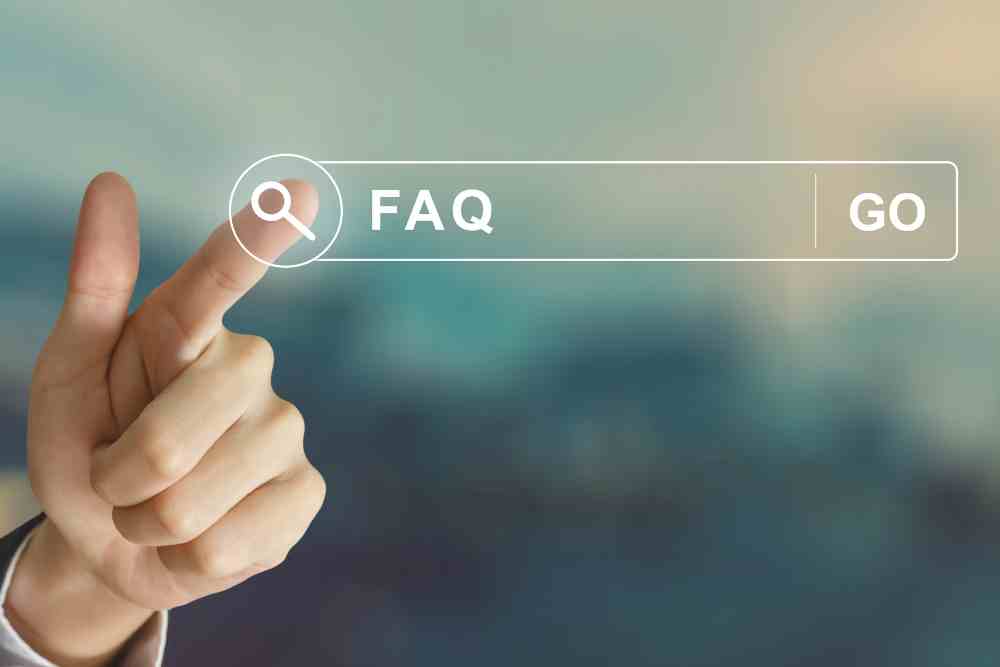Managing Business Data Efficiently with CRM Analysis

In today’s digital age, businesses are generating vast amounts of data on a daily basis. From customer information to sales figures, this data holds valuable insights that can help businesses make informed decisions and drive growth. However, managing and analyzing this data can be a daunting task without the right tools and strategies in place. This is where Customer Relationship Management (CRM) analysis comes into play.
What is CRM Analysis?
CRM analysis refers to the process of examining and interpreting data collected through a CRM system to gain insights into customer behavior, sales trends, and overall business performance. By leveraging CRM analysis, businesses can make data-driven decisions, improve customer relationships, and optimize their sales and marketing strategies.
The Benefits of CRM Analysis
Implementing CRM analysis can provide businesses with a wide range of benefits. Let’s explore some of the key advantages:
- Improved Customer Understanding: CRM analysis allows businesses to gain a deeper understanding of their customers by analyzing their preferences, purchase history, and interactions. This insight can help businesses tailor their products, services, and marketing campaigns to better meet customer needs.
- Enhanced Sales Performance: By analyzing sales data, businesses can identify patterns and trends that can help improve sales performance. For example, CRM analysis can reveal which sales strategies are most effective, which products are selling well, and which customer segments are the most profitable.
- Streamlined Marketing Efforts: CRM analysis can help businesses optimize their marketing efforts by identifying the most effective channels, messages, and campaigns. By understanding which marketing activities generate the highest return on investment, businesses can allocate their resources more efficiently.
- Better Customer Service: CRM analysis can provide businesses with insights into customer satisfaction levels, common issues, and support ticket trends. Armed with this information, businesses can address customer concerns more effectively and provide a better overall customer experience.
- Increased Efficiency: By automating data collection and analysis processes, CRM systems can save businesses time and resources. This allows employees to focus on more strategic tasks, such as building relationships with customers and developing innovative solutions.
Case Study: XYZ Company
To illustrate the power of CRM analysis, let’s take a look at a real-life example. XYZ Company, a small e-commerce business, implemented a CRM system and started analyzing their customer data. They discovered that a significant portion of their customers were abandoning their shopping carts before completing the purchase.
By diving deeper into the data, XYZ Company identified some common reasons for cart abandonment, such as unexpected shipping costs and a complicated checkout process. Armed with this knowledge, they made several changes to their website, including offering free shipping for orders over a certain amount and simplifying the checkout process.
The results were remarkable. XYZ Company saw a significant decrease in cart abandonment rates and an increase in completed purchases. By leveraging CRM analysis, they were able to identify and address pain points in the customer journey, resulting in improved sales performance and customer satisfaction.
Implementing CRM Analysis
Now that we understand the benefits of CRM analysis, let’s explore how businesses can effectively implement it:
- Choose the Right CRM System: Selecting the right CRM system is crucial for successful analysis. Look for a system that offers robust data collection and analysis capabilities, as well as integration with other business tools.
- Define Key Metrics: Determine the key metrics and KPIs (Key Performance Indicators) that align with your business goals. These could include customer acquisition cost, customer lifetime value, conversion rates, and customer satisfaction scores.
- Collect and Clean Data: Ensure that your CRM system is collecting accurate and relevant data. Regularly clean and update your data to eliminate duplicates and inconsistencies.
- Analyze Data: Utilize the reporting and analysis features of your CRM system to gain insights into customer behavior, sales trends, and marketing effectiveness. Look for patterns, correlations, and outliers that can inform your decision-making process.
- Take Action: Use the insights gained from CRM analysis to make data-driven decisions and implement changes to your sales, marketing, and customer service strategies. Monitor the impact of these changes and iterate as necessary.
Get Your FREE 14-Day Trial and Take Your Business To The Next Level with an All-In-One Sales and Marketing Platform for businesses, agencies and marketers.
CRM analysis is a powerful tool that can help businesses manage their data efficiently and gain valuable insights. By leveraging CRM analysis, businesses can improve customer understanding, enhance sales performance, streamline marketing efforts, provide better customer service, and increase overall efficiency. Implementing CRM analysis requires choosing the right CRM system, defining key metrics, collecting and cleaning data, analyzing the data, and taking action based on the insights gained.
With the right CRM system and effective analysis strategies in place, businesses can unlock the full potential of their data and drive growth in today’s competitive business landscape.
Visit https://SaasExpert.ca – Your All-In-One Sales and Marketing Platform for small businesses, agency owners, and marketers.
Learn more about “How to use a CRM for data gathering” right here.
Frequently asked questions about Managing Business Data Efficiently with CRM Analysis.

How can CRM analysis streamline the sales process for better results? 🎯
CRM (Customer Relationship Management) systems don’t just manage relationships; they’re powerhouses of data analytics that can revolutionize sales. Let’s dive into how:
Lead Prioritization 🌟: With CRM analysis, leads can be scored based on their interactions and behaviors. This means sales teams can focus on the most promising leads first, optimizing conversions.
Sales Forecasting 🌦️: By analyzing past sales trends and current market conditions, CRM can predict future sales, helping businesses prepare and strategize accordingly.
Understanding the Sales Funnel 🌀: Through data visualization, you can pinpoint where potential customers drop off or hesitate. This clarity empowers sales teams to tailor their strategies for maximum effectiveness.
Automated Follow-ups 🤖: CRM analysis can identify leads that haven’t been contacted in a while, prompting automated reminders or follow-ups, ensuring no opportunity is missed.
Performance Tracking 📊: By monitoring metrics like conversion rates, call durations, or feedback, sales teams can continually refine their approach.
In essence, CRM analysis is like equipping your sales team with a GPS, guiding them through the winding roads of customer acquisition towards success.
How can CRM analysis help in optimizing marketing campaigns? 🚀
Marketing in today’s world can feel like shouting into a void. But with CRM analysis, that void turns into a receptive audience:
Segmentation for Personalization 👥: CRM can segment audiences based on demographics, purchase behaviors, or interests. Tailored campaigns can then be created for each segment, increasing relevancy and engagement.
Campaign Performance Analysis 📈: Track metrics like open rates, click-through rates, and conversion rates. Understand what’s working and what’s not, allowing for iterative improvements.
Predictive Analysis for Targeting 🎯: Based on past campaign responses and customer behaviors, CRM can predict which users are more likely to respond to specific campaigns.
Budget Allocation 💰: By understanding which campaigns yield the best ROI, businesses can allocate budgets more efficiently.
Feedback Loop Integration 🔄: Use CRM to gather customer feedback post-campaign, offering insights for future strategies.
With CRM analysis, marketing becomes less of guesswork and more of a precise science, ensuring that campaigns are sharp, resonant, and impactful.
Can CRM analysis improve customer service and retention? 🤝
Absolutely! CRM isn’t just about getting customers; it’s about keeping them too:
Customer History at Fingertips 📜:
When a customer reaches out, having their entire interaction history allows for quicker issue resolution and a personalized touch.
Issue Tracking and Resolution 🛠️: CRMs can track open issues, ensuring timely follow-ups and prompt resolutions, enhancing customer satisfaction.
Predictive Services 🧠: By analyzing customer behaviors and purchase histories, businesses can anticipate needs and offer solutions or products proactively.
Feedback Collection and Implementation 🎤: Use CRM tools to gather feedback and then analyze this data to drive improvements.
Loyalty Program Integration 🎁: Based on purchase patterns and interactions, offer loyalty programs or special deals to retain valuable customers.
In the grand scheme of things, acquiring a new customer can be more costly than retaining an existing one. CRM analysis ensures that existing customers don’t just stay; they thrive and advocate!
How can I use CRM analysis to drive product or service improvements? 💡
Behind every successful product or service lies a treasure trove of customer insights. CRM analysis can help unearth them:
Feedback Aggregation 🗂️: Consolidate feedback from various channels to understand common pain points or wishes.
Usage Patterns and Trends 📊: Track how customers are using a product or service. Are there features that are rarely touched? Or some that are constantly in demand?
Integration with R&D 🧪: By sharing CRM insights with research and development teams, businesses can tailor innovations to genuine customer needs.
A/B Testing Insights 🔍: Launch two variations of a product feature and use CRM to track which one garners better customer response.
Monitor Post-Launch Reactions 🚀: After launching an improved product or feature, use CRM to monitor customer reactions, ensuring the changes hit the mark.
Innovation driven by CRM analysis ensures that product or service improvements aren’t based on mere hunches but concrete customer insights, maximizing chances of success.
How can CRM analysis help in resource allocation and team productivity? 🏋️
Resource allocation can make or break a business. With CRM analysis, this critical task becomes data-driven and strategic:
Task Automation 🤖: Identify repetitive tasks and automate them. This not only saves time but ensures consistency.
Team Performance Metrics 📈: Understand which teams or individuals are outperforming and why. This can help in training and strategy formulation.
Identify Resource Gaps 🕳️: CRM can highlight areas where resources are stretched thin, allowing for timely interventions or hirings.
Streamline Communications 🗣️: Integrated communication tools can ensure that teams remain aligned, reducing misunderstandings and redundancies.
Project Management Integration 📅: Link CRM with project management tools. This can help track project timelines, allocate tasks based on team strengths, and ensure timely deliveries.
A business is only as strong as its weakest link. With CRM analysis, ensure that resources are utilized to their fullest
- crm
- customer relationship management
- Managing Business Data Efficiently with CRM Analysis
- What is CRM Software?






